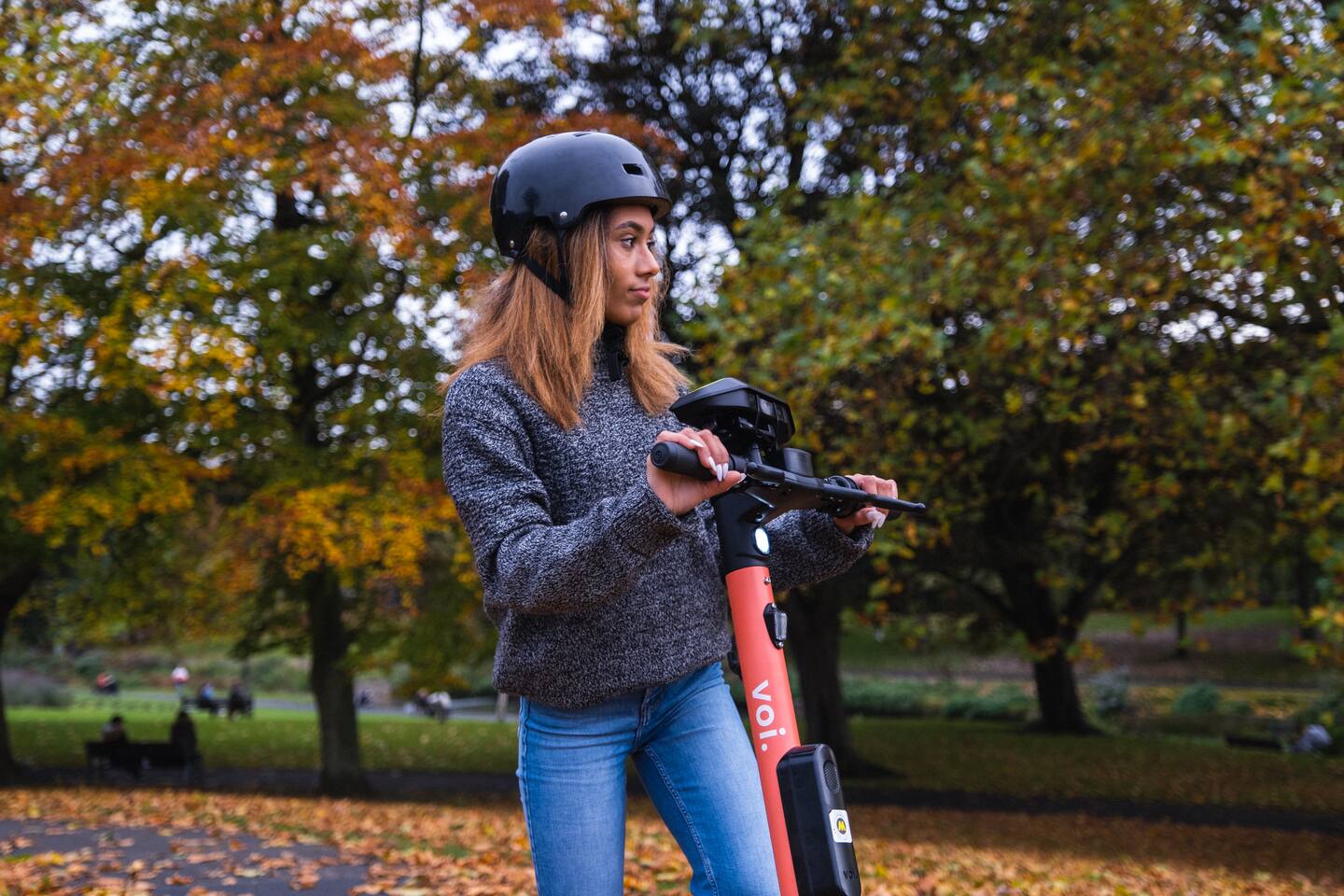E-scooters are getting computer vision to curb pedestrian collisions

As people reemerge from shutdowns, wary of congested trains and buses, the micromobility industry may enjoy a post-pandemic renaissance, analysts say. People are buying more of the two-wheelers in some markets. China-based Niu saw sales rise sales 6.3 percent internationally as cities such as Boston, New York and Minneapolis expanded bike lanes to encourage social distancing, setting the framework for a potential e-scooter comeback.
By the time the novel coronavirus is in the rearview mirror, riders could be encountering a new type of e-scooter, one that picks up safety tools from modern cars.
Last week, micromobility companies Luna and Voi Technology came together to kick off a test fleet of e-scooters with pedestrian detection. The test scooters are deployed in Northampton, England.
Luna, a Dublin-based start-up, developed the system of cameras and sensors that it says will enable the scooters to learn and respond to their environments. Voi, a Scottish e-scooter manufacturer, integrated Luna’s computer vision system into 50 of its e-scooters.
Pedestrian detection systems aren’t new. They’ve helped drivers of high-end cars avoid colliding with people and other vehicles for years. But introducing that type of technology to e-scooters gives local authorities access to a real-time camera feed, enabling them to monitor and better police rider behavior. It also enables cities to quickly respond to crashes or potholes.
The immediate goal for Voi and Luna is to have the devices detect people and objects in a scooter’s path, even if the rider doesn’t see them. The idea is to make scooter users and pedestrians feel safe as they navigate busy streets, which is the most significant issue plaguing cities with legalized shared e-scooters, according to Fredrik Hjelm, CEO of Voi.
“When looking at cities’ micromobility pain points, it’s mainly around parking and safety,” Hjelm said. “How do we make sure nonriders feel safe when they’re close to scooter riders, and how do we make scooter riders feel safe next to pedestrians on sidewalks?”
The use of shared bikes and e-scooters jumped 60 percent from 2018 to 2019 in the United States as the trend expanded across metro areas including Washington, Atlanta and Chicago. The rapid rollout happened as micromobility companies and municipalities hailed the quirky two-wheelers as partial solutions to traffic issues, transit overcrowding and climate change.
Founded in 2018 in Stockholm, Voi operates in 50 cities across Europe and aims to introduce its transportation options to New York in 2021. The latest iteration of the company’s e-scooters comes with a black box between the handlebars with sensors to detect and count pedestrians in the surrounding area. That, along with GPS and artificial intelligence, can determine whether the rider is in a bike lane, on the sidewalk or in the middle of the road.
Thousands of pictures of real people were used to train the pedestrian detection system, which is similar to the safety braking systems used in cars, according to Ronan Furlong, co-founder of Luna. The only notable difference is that Luna’s system is smaller and cheaper to reproduce, Furlong said. The start-up also is seeking to license its technology to other e-scooter companies across multiple countries, including the United States, in the coming years.
“We think in three to five years, every new scooter out there is going to be equipped with a camera,” Furlong said.
The data from the smart micro-vehicles can be used to slow a scooter down, minimize congestion or lock out people who don’t follow local transportation rules. GPS tracking can also help cities monitor where scooters are being parked or abandoned, and ultimately control where they’re being used.
“In a market where e-scooters are not allowed on sidewalks, and we see that a scooter user does that 20 times in a row, we can potentially ban the user from using our vehicles,” Hjelm said.
E-scooters looked to be playing a central role in public transportation until the pandemic jolted the industry in March. Voi, along with Bird, Lime and other competitors in the shared e-scooter space, scaled back operations in response to sluggish demand early in the outbreak. But the slowdown could be temporary.
Some e-scooter companies report rising sales to individuals as commuters use the two-wheelers to run errands rather than as a way to travel to and from work. The e-mobility company Halfords said sales rose 71 percent during the pandemic. Niu reported a similar trend, with domestic sales rising 68 percent. While overall ridership is lower with tourism down sharply, Voi says riders are using its scooters more in suburban areas and for longer trips than before. The length of the average trip rose from about 11 minutes to 18 minutes amid the pandemic, Voi says.
“The big micromobility story this year has been the infrastructure story, because so many cities have created pop-up bike lanes,” said Horace Dediu, a micromobility analyst at the research company Asymco. And many of the cities that rolled them out might decide to keep them, he added.
Paris, a leading micromobility market, has already decided to make them permanent, announcing over the summer that it will allow the e-scooter firms Dott, Lime and Tier to operate 5,000 vehicles apiece in the city for the next two years.






